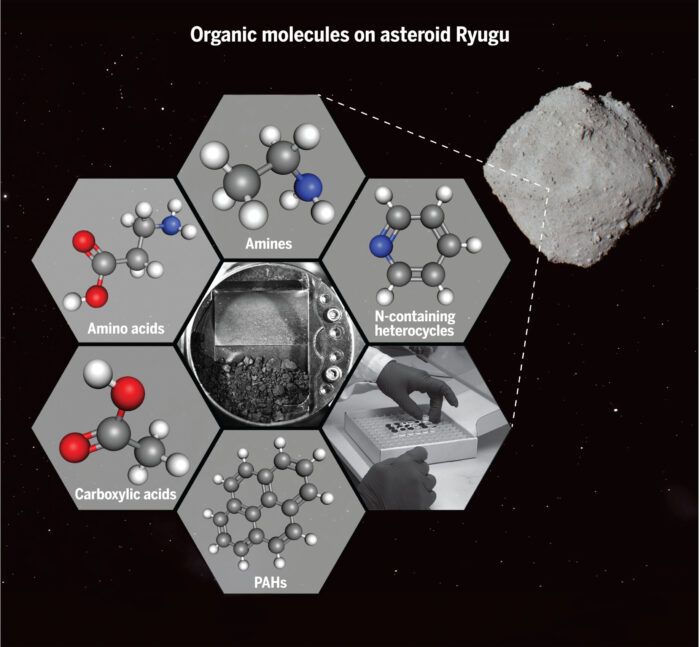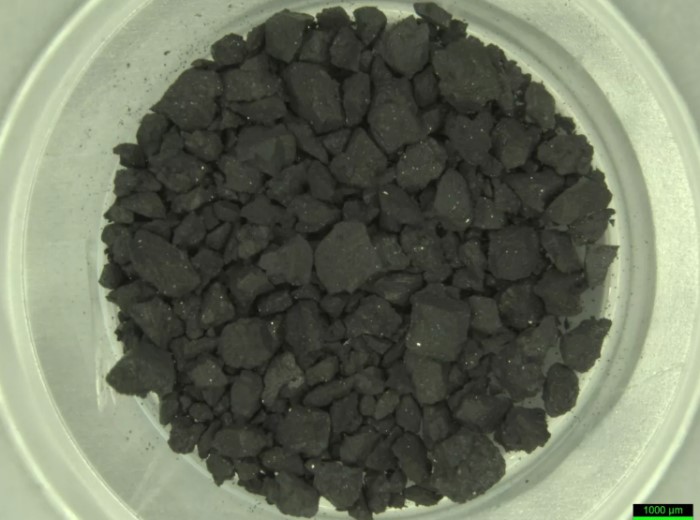Over three years ago, a Japanese space probe returned to Earth. On board, it had samples from a most curious source.
An asteroid named Ryugu, which orbits the Sun between Earth and Mars.
The probe, named Hayabusa-2, had been sent there to briefly touchdown on this space rock.
What's in an asteroid?
To see what is in an asteroid, we can examine pieces of them that have fallen to Earth. But they could be 'contaminated' by our atmosphere. To know for sure what they contain, we need to visit the asteroids. (Getty Embed)
Ryugu the asteroid is a carbonaceous, or C-type, asteroid, one that is extremely dark and made mostly of carbon. C-types make up about 75% of asteroids in the solar system. Millions and billions of years ago, these were the sorts of asteroids that were regularly raining down on our planet.
Scientists have long wondered whether these asteroids carried with them molecules that helped to kickstart life. They have examined meteorites (rocks that have fallen to Earth) and found these elements, known as 'prebiotics'. But because these things are present in our own atmosphere, did the rocks bring them, or simply pick them up from the atmosphere before they landed? There was only one way to find out.
Visit an asteroid still in space and collect samples!
Questions answered

According to tests, Ryugu is loaded with organic compounds that are the building blocks of life. (JAXA)
Hayabusa-2 was the second attempt by JAXA (Japan's space agency) to visit a C-type asteroid and collect a sample. The first Hayabusa returned only with a smattering of dust.
But Hayabusa-2 was a success, collecting about 5 grams of Ryugu's rock. And now after a few years of testing, scientists have released their first results.
Ryugu is indeed rich in prebiotics (think 'before life stuff'!), including 15 different amino acids. Are these things life? No. But they ARE crucial to the beginnings of life. These molecules are vital building blocks that, under the right conditions, can be turned into basic life forms.
The right conditions, such as a planet like Earth!
What's more, the results showed that these materials are at least 4.5 billion years old, from the start of our solar system. And maybe even earlier than that, having been formed in some deeply ancient cloud of space dust and gas.
The origins of life?
Back in 2016, NASA launched a similar mission to an asteroid called Bennu. The probe on board, OSIRIS-REx, is due to return this September. (Getty Embed)
For now, it is still difficult to say exactly how life came to be on Earth. Was the majority of it due to materials formed and found naturally on this planet after it had formed?
Or was it 'seeded' with the building blocks of life by asteroids that rained down for eons?
With so many questions about the origins of life and our planet, more research needs to be done. And thankfully, this research is well underway. NASA's OSIRIS-REx mission is slated to return this September with its own samples from another asteroid, Bennu.
We can't wait to 'C' what answers they bring back!
 Just a pile of ashphalt? No way, this is precious rock from deep in space! (JAXA)
Just a pile of ashphalt? No way, this is precious rock from deep in space! (JAXA)









